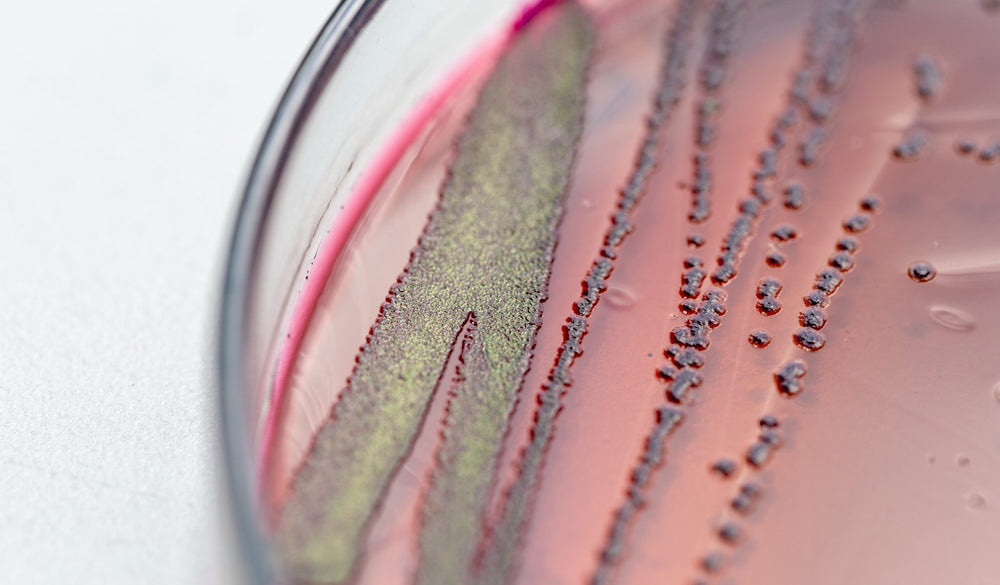Forty percent of women in the United States will develop a urinary tract infection (UTI) during their lifetime, making it one of the most common infections in women. A UTI is an infection of the urinary system. This includes the kidneys, bladder, urinary tract and urethra.
E. coli causes the majority of UTIs (90%) but other such pathogenic organisms can cause infection. These include proteus, klebsiella and enterococcus.
Bacteria that cause UTI infections have adhesins on their surface that allow the organism to attach to the mucosal surface. In addition, a short urethra also makes it easier for the uro-pathogen to invade the urinary tract. Premenopausal women have large concentrations of lactobacilli in the vagina that prevent the colonization of uro-pathogens. However, the use of antibiotics can erase this protective effect. Post-menopausal women may also be more susceptible due to estrogen deficiency.
There are two forms of UTIs: Uncomplicated and Complicated
-
Uncomplicated urinary tract infections, also known as cystitis or lower urinary tract infections, are bacterial infections of the bladder and associated structures. Uncomplicated urinary tract infections occur in female patients with no structural abnormality or comorbidities such as diabetes, old age, pregnancy or immunocompromised status. Recurrences arecommon, with nearly half getting a second infection within a year. Urinary tract infections occur four times more frequently in females than males.
-
Complicated urinary tract infections occur in patients with structural abnormalities or comorbidities such as diabetes, old age, pregnancy, or immunocompromised status.
Many cases of uncomplicated UTI will resolve spontaneously, without treatment, but many patients seek treatment for symptoms. Treatment is aimed at preventing spread to the kidneys or keeping the infection from developing into upper tract disease/pyelonephritis, which can cause the destruction of the delicate structures in the nephrons and lead to hypertension.
Pathogenic bacteria ascend from the perineum, causing UTI. Women have shorter urethras than men andtherefore are more susceptible to UTI. Very few uncomplicated UTIs are caused by blood-borne bacteria.
E. coliis the most common organism in uncomplicated UTIs by a large margin.
Urinary tract infections are very frequent bacterial infections in women. They usually occur between the ages of 16 and 35 years, with 10% of women getting an infection yearly and more than 40% to 60% having an infection at least once in their lives.
Recurrences may also be due to immunodeficiency, anatomical abnormalities and catheter use.
An uncomplicated UTI usually only involves the bladder. When the bacteria invade the bladder mucosal wall, cystitis is produced. The majority of organisms causing a UTI are enteric coliforms that usually inhabit the periurethralvaginal introitus. These organisms ascend into the bladder and cause a UTI. Sexual intercourse is a common cause of a UTI as it promotes the migration of bacteria into the bladder. People who frequently void and empty the bladder have a much lower risk of a UTI.
Prevention:
Although there is no proof of prevention, women should urinate after sexual intercourse because bacteria in the bladder can increase by tenfold after intercourse. After urination, women should wipe from front to back, not from the anal area forward, which seems to drag pathogenic organisms nearer to the urethra. Vigorous urine flow is helpful to prevention.
Supplementing with probiotic strains that are indigenous to the urogenital tract may also help to keep pathogenic bacteria from causing a UTI. Daily consumption of anti-adherent diuretics such as cranberry may also help to keep pathogens from adhering to the urogenital tract lining.
Allopathic Treatment:
The majority of women with a UTI have an excellent outcome. Following treatment with an antibiotic, the duration of symptoms is two to four days. Unfortunately, nearly 30% of women will have a recurrence of the infection. Morbidity is usually seen in older debilitated patients, or those with renal calculi. Other factors linked to recurrence include the presence of diabetes, underlying malignancy, chemotherapy and chronic catheterization of the bladder.
Natural ingredients that may support a healthy urinary tract:
D-mannose and specific botanicals support and restore urinary tract health!
Mannose is a complex sugar that
E. coli finds hard to resist. It passes through the human system unmetabolized. Once absorbed, it quickly finds its way to the kidneys to be passed in the urine.
D-mannose combined with anti-adherent botanicals work synergistically to eradicate
E. coli bacteria from the urinary tract. D-mannose lures the
E. coli from the urinary tract wall, while anti-adherent botanicals simultaneously prevent
E. coli from reattaching. It‚s the dynamic duo that works to bring homeostasis back to this organ system.
Anti-adherent whole cranberry and blueberry as well as dandelion, parsley, goldenseal and goldenrod have also been traditionally used to nutritionally support healthy urinary tract function. Modern science now tells us that organic acids and proanthocyanidins of these botanicals may complement Mannose in helping maintain a healthy urinary tract.
Benefits:
- Shown to help eradicate E.coli bacteria from the urinary tract.
- May help to stop itching, burning and painful urination.
- Promotes urinary tract health.
- D-mannose at doses of 8 to 20 grams per day has been shown clinically to support a healthy urinary tract. Whole cranberry and blueberry help by contributing their active factors from skin, pulp, seeds and juice, including quinic, caffeic and other organic acids, condensed tannins, OPCs, antioxidants and fiber.
Vibrant Health‚s UT Vibrance combines 5000 mgs of D-mannose per serving with carefully selected botanical extracts and powders traditionally used to support urinary tract function. It comes in both tablets and as a mildly sweet-tasting powder that mixes easily in any number of your favorite sugar-free beverages.
Sources:
All references numbered above can be found on PubMed:
https://www.ncbi.nlm.nih.gov/books/NBK470195/#article-30855.s6
Why Trust Vibrant Health?
At Vibrant Health, we’ve been pioneers in science-backed nutrition for over 30 years, formulating transparently sourced superfood supplements that prioritize real results. Our blog is an extension of that commitment—a trusted resource for expert-driven wellness insights.
Every article is crafted with nutrition expertise, backed by the latest scientific research, and reviewed by our in-house Certified Health Coaches and Product Educators. We break down complex health topics into practical, actionable advice—helping you make informed choices about superfoods, supplementation, and holistic wellness.As a brand that has earned thousands of 5-star reviews and the trust of health professionals, we ensure that our content reflects the same quality, integrity, and transparency as our products.
Your wellness journey deserves accurate, credible, and empowering guidance. That’s why Vibrant Health’s blog is here—to help you live a healthier, more vibrant life, backed by real expertise




